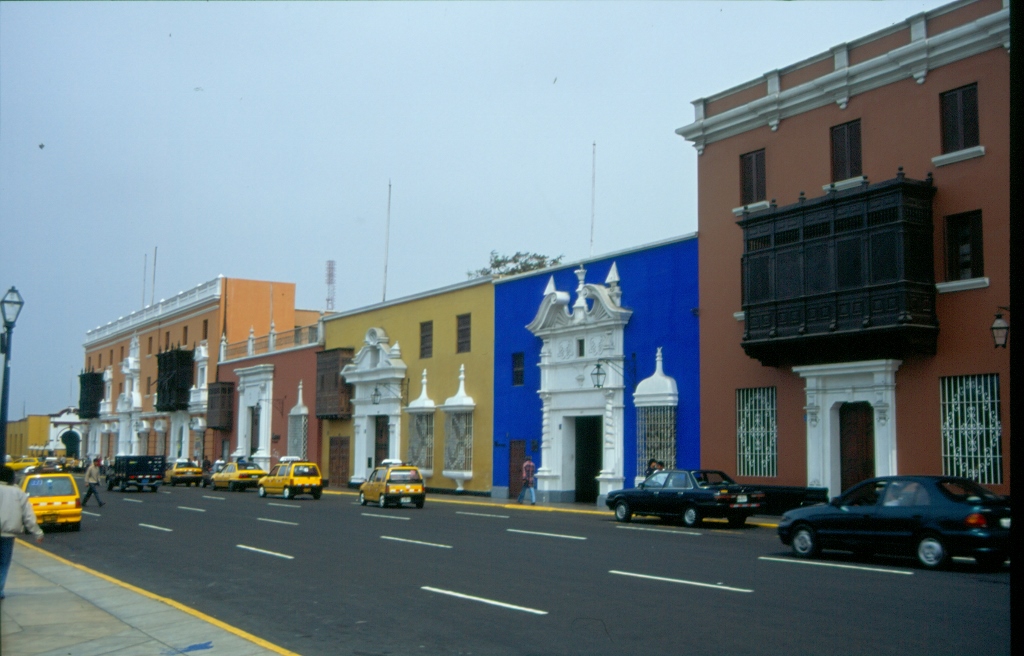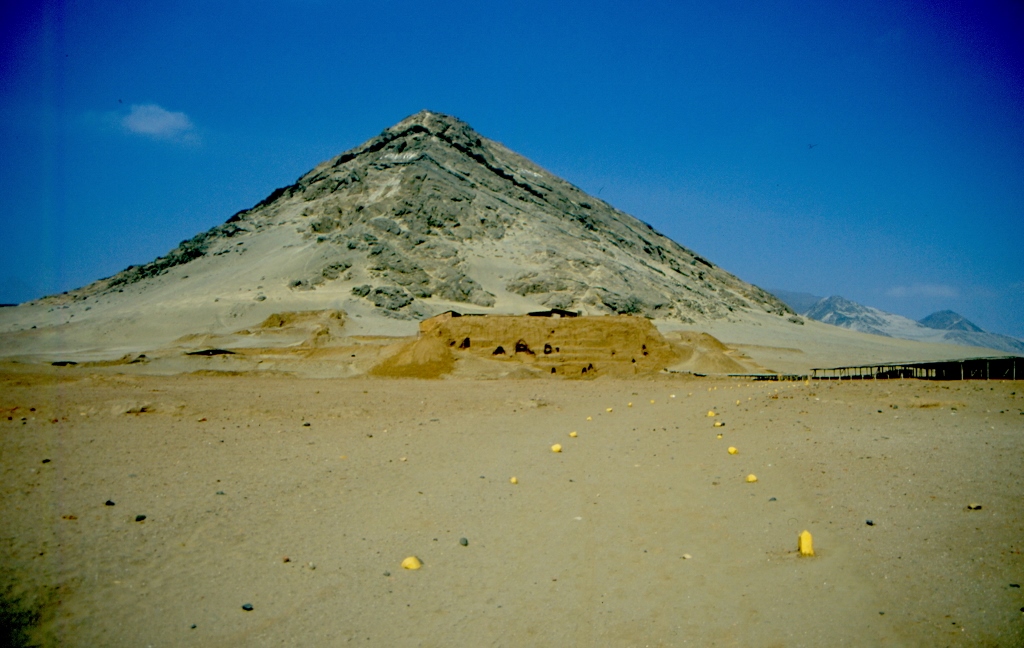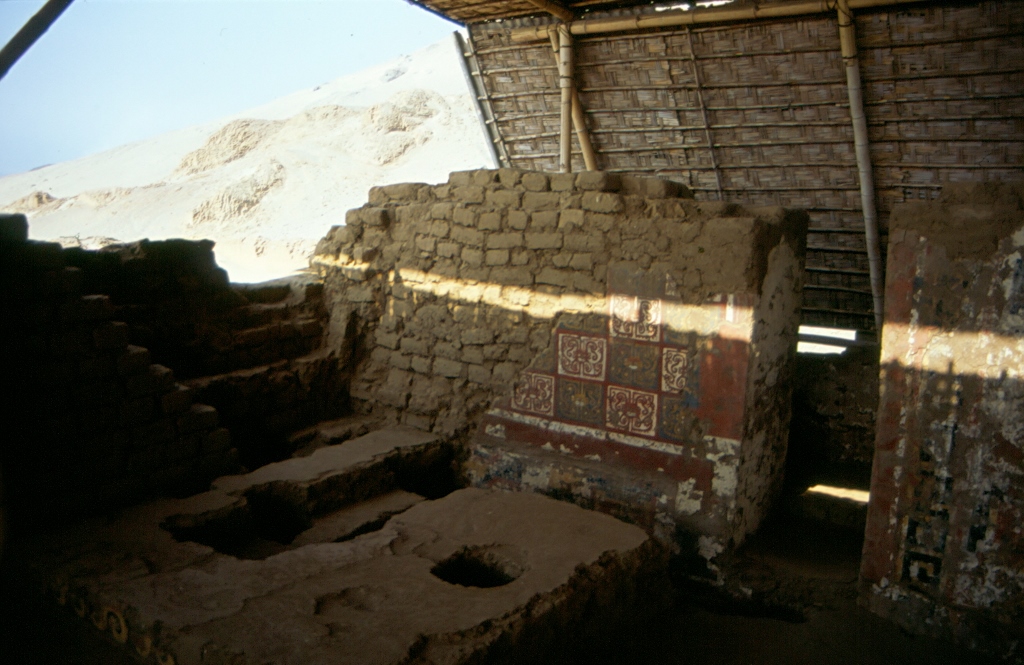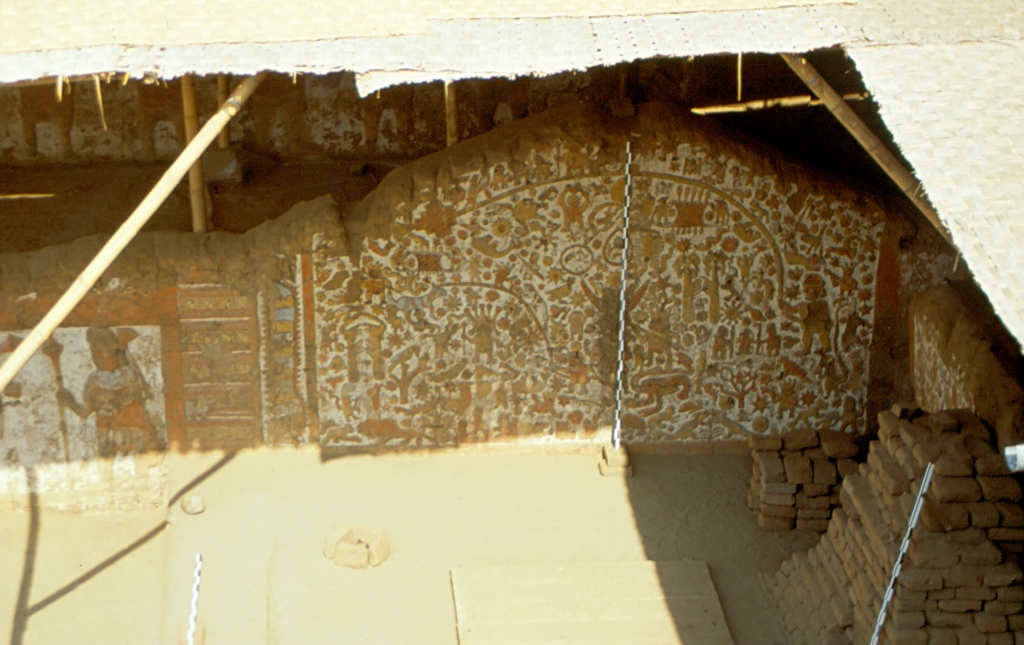The next morning again I had to get up around 5, which was turning into a habit, but this time it was in order to catch a plane to Lima. Not only did I save on those 30 plus hours of coach ride, but also in this way I was in Lima early and by 10 o’clock in the morning I was already taking a recipe for ceviche from Virginia’s mom.
I soon got ready and went to the Gold Museum. It is relatively close to the Museum of the Nation and is absolutely worth the visit. From the place where I got out of the public transport (yes, yes, these were still small vans not in my size) to the museum I passed between houses that obviously belonged to very wealthy families. How could I tell? Well, they were all surrounded by perfectly beautifully maintained walls, probably 3 meters high, on top of which there were numerous rows and coils of barbed wire with electricity clearly passing through them, for some “electricity elements” could be seen along the installation. In comparison to the broken glass bottles I saw in south Peru, this was certainly “high tech” security. As for the houses themselves, only parts of the roofs could be seen, as well as some trees that protruded from below. It was quite evident that people living in them were exceptionally wealthy in comparison to me, but I did wonder if I would love to live in abundance surrounded by perfectly maintained 3-metre high walls with barbed wire and electricity on their top. Of course, this was just a rhetorical question.
The Gold Museum is not very big, but it is very good and worth seeing. The main thing about it, as its name says, is a large and impressive collection of objects made of gold and silver from the pre-Columbian period. It is all placed and exhibited on the basement premises. On the ground floor there is practically a mini military museum: different weaponry, uniforms, etc. It was not bad, but it was overfull. The first floor contained exhibits of textiles and tapestries.
After I had finished with the visit to the museum, I went back to San Isidro (the part of Lima in which I stayed) where I waited for Virginia to come back from work. Then we went together to do some purchasing, I bought a ticket to Trujillo and she bought some stuff for her restaurant. Although we were both tired, we waited together until the evening, for I had a coach at 11 pm. I fixed myself on the coach nicely and comfortably, put my small backpack onto my lap, then my jacket which also served as a warm cover over the backpack, and I was ready. By then, I was already accustomed to sleeping well during my long journeys, although proper bed still continued to be my favourite place for the night rest.
Early in the morning, I reached Trujillo. This is a town on the north section of the Peruvian coast. The reason why I came here was the following. I had just a few more days left for visiting Peru before the booked flight out of Lima and several cultural properties from the Unesco’s list which I wanted to see. Thus I planned to go to the National Park Huascaran with beautiful mountain peaks and to the archaeological site Chavin, but during my travelling several people strongly suggested that I should skip this in order to be able to reach a museum in Lambayeque that holds the artefacts found in the tomb of the Lord of Sipan. I was in two minds for a while, but I decided eventually to take the advice given to me, especially since I did have another site from the World Heritage List near Trujillo and that was Chan Chan.
So, when I arrived in Trujillo, I first went to the hotel where I caught up on my sleep and then I went for a walk around the town. It was not bad. There were some interesting parts and some very beautiful buildings. Those around the main square were particularly attractive and elegant. By the way, the sky was continuously gray. Even before I came, I had heard that the European summer was not a good period for visiting the coast of Peru, as it tends to be cloudy all the time. And indeed it was. While I was at the coast, there was neither the Sun nor the Moon in sight.
 Trujillo
Trujillo
As I walked around the town, it occurred to me that I could go to a hairdresser’s to have my hair washed, rather than bother with the hotel shower through which only some tepid water slowly ran. So, I sat down on a chair, ready to enjoy the experience of having my hair groomed, when the girl took a jug and started to pour cold water over my head. Well, the water was not really faucet cold, it was room temperature, but that, in fact, meant that it was actually cold. However, in a second it took me to realize this, my hair was already wet, so I didn’t have much of a choice and I let the things take their course. It ended up by the girl sort of drying out my hair with a towel alone and that was it. Luckily, it was not too cold outside, so I managed to survive going out with my hair wet, but that was the end of my desires to visit hairdressers here. Admittedly, I was soon to return home and there was no need for any further experiments.
Walking around Trujillo, I met a guy named Miguel. It happened as I walked along the streets of the town and then a young man simply approached me, presented himself and started to chat with me. He asked me where I was from and when I told him, and by the way all of this was in Spanish, all of a sudden he blasted out a swearing phrase in perfect Serbian! I was completely perplexed. As it turned out, he used to work on cruisers and there he met some people from Serbia and Montenegro. Well, they obviously must have hit it off and become close enough!
Then I went to a mini bus station where I caught transportation to the place where Huaca del Sol and Huaca de la Luna are located. The site is just a few kilometres away from Trujillo, but it is all desert out there. In the middle of that desert, members of the tribe and culture Moche (100 – 800 AD) built two big structures. One was dedicated to the Sun, it is the bigger one or rather it is huge and in fact it is the biggest edifice made of abode in Americas (both North and South). A good portion of it has been destroyed, either by the weather or by the Spanish who used to think that there was hidden treasure in its middle, but the only thing they found were more adobes. At the time when I was there it was closed for visits, that is, it was no longer permitted to climb on it. It seems that this used to be possible in the past.
 Approach to Huaca de la Luna. Let there be no mistake, it is the ochre structure in the middle. The big thing in the background is a hill that resembles a pyramid.
Approach to Huaca de la Luna. Let there be no mistake, it is the ochre structure in the middle. The big thing in the background is a hill that resembles a pyramid.
The other, smaller edifice, Huaca de la Luna, was opened for visits and it was more interesting anyway, because it also had some very pretty frescoes. Behind it, there is a rocky hill which is called White Mountain (Cerro Blanco) and since it has a shape of a pyramid, the Moche considered it their holy mountain.
As for the Huaca de la Luna, it is presumed that this was their sanctuary dedicated to the Moon, as its name suggests. For me this was a very unusual construction where one goes from one platform to the next, looking at different rooms and hallways and everything was full of pillars with canopies that served for the protection of the Huaca. But there was also a lot of scaffolding used in order to provide archaeologists and conservators with a better access to some parts where they still worked. Everything implies that the Moche first built a smaller structure, then added more material over it for a bigger model, and then some more for an even bigger sanctuary. And they kept doing it several times. Almost like a Babushka effect.
 Huaca de la Luna
Huaca de la Luna
The main deity in the Moche culture was the terrible god Ai Apaec and his depicted image may be seen very well in some of the walls. Generally speaking, Huaca de la Luna is a rather impressive construction almost two thousand years old. I was quite surprised by its imposing stature, as I didn’t expect it. It was made of adobe, but apart from the building elements, there are also numerous reliefs and wall paintings done in the al fresco style. Of course, there are not many of them, in some places there are just remains of colours, in some others there are ornamental sequences and friezes, but there are also some wonderful, painted complex compositions that have survived for the most part. There are warriors of the Moche tribe, serpents, birds, fish, plants of all sorts and many other things, and all of this tells stories to those who are in the know about the Moche. I just looked around and admired it.
 Huaca de la Luna
Huaca de la Luna
When one gets to the top of Huaca de la Luna, it is possible to see nicely the rest of the site with the remaining foundations, as well as the nearby Huaca del Sol. It is indeed huge and impressive, but it also appears like a structure in a deathbed, so it’s just as well that it is prohibited for people to climb on it. There, at the site around both of Huacas, one can see only sand, but further down in the direction of the ocean it is possible to glimpse a thin strip of greenery.
Having visited the site, I went back to Trujillo. As agreed, I met Miguel and then we went together to eat papa rellena, which means stuffed potato, and that was really tasty. Boiled potatoes are mashed and then a large dumpling is made out of it, while in the centre there is minced meat already prepared with seasonings. The dumplings are then fried in oil. It is served with cabbage, mayonnaise and hot sauce. What was particularly interesting about this meal was that it was all happening in the middle of a street. Well, in fact, not in the middle of the street as such, but rather on the pavement, but it somehow comes to the same thing. The “kitchen” was located in a cart – a butane cylinder and a stove, with a deep frying pan on top of the stove. Papa rellena was pre-prepared, ready to be fried and was brought in large pots, just like the cabbage salad, while the meal was finished there on the spot. That also meant it was warm. The finished papa rellena was served on a plastic plate, together with the rest of the serving, and the vendors also provided plastic cutlery and paper serviettes. Around the improvised kitchen there were numerous small plastic chairs, so that one could sit down nicely and enjoy the meal in peace. Before this evening, I did not dare eat like that in the street, but Miguel’s presence encouraged me somehow and I was really grateful to him for suggesting we came there. So much so, that the next evening I went out alone for dinner at the same place again, because it was truly, truly delicious.